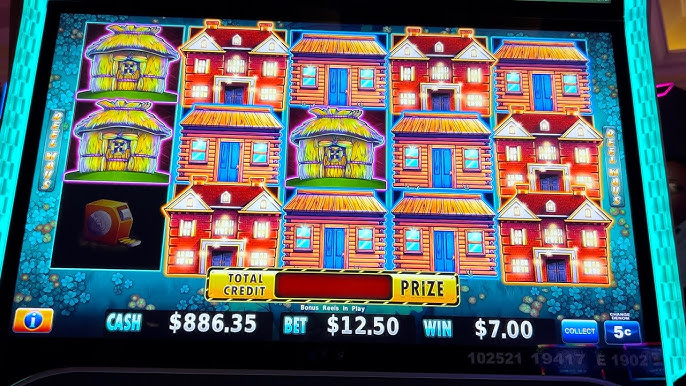
Exploring Slot Games: Fun, Strategy, and Technology Behind the Spin
Slot games, also known as “slots” or “one-armed bandits,” have become a cornerstone of both physical casinos and online gaming platforms. These games are widely popular for their simplicity, excitement, and the potential for massive rewards. Over the years, Pol88 games have evolved, with advancements in technology and design offering players a more immersive and dynamic gaming experience. In this article, we’ll dive into the history, gameplay mechanics, types, and the technology behind modern slot games.
The History of Slot Games
The first-ever slot machine was invented in 1895 by Charles Fey, a mechanic from San Francisco. Known as the “Liberty Bell,” it featured three reels with five symbols: horseshoes, diamonds, spades, hearts, and a bell. When three Liberty Bells aligned, players were rewarded with the highest payout. This machine became an instant success and laid the groundwork for what would become the massive global industry of slot games.
Over the years, slot machines became increasingly sophisticated. By the 1960s, electromechanical machines replaced mechanical ones, allowing for more advanced features. The 1980s saw the rise of video slots, introducing visual effects, more reels, and thematic designs. With the dawn of the internet, online slot games appeared in the 1990s, opening the door for even more innovation and attracting a new generation of players.
How Slot Games Work
Slot games, whether physical or digital, share similar gameplay mechanics. The core idea revolves around spinning reels with various symbols. The objective is to line up matching symbols along a payline, which can result in various rewards, such as monetary payouts, free spins, or bonus rounds.
-
Reels and Symbols: Traditional slot machines use three reels, but modern games often feature five or more. Symbols on the reels can include anything from fruits and numbers to themed images based on movies, TV shows, and pop culture. The arrangement of these symbols across the reels is random, ensuring that each spin is independent of the last.
-
Paylines: Paylines are lines across the reels where symbols must match to win. While classic machines often had one payline (usually horizontal), modern slots can have hundreds or even thousands of paylines, offering players more chances to win. Paylines can run horizontally, vertically, diagonally, or even in zig-zag patterns.
-
Random Number Generator (RNG): Slot games are powered by RNGs, which ensure that each spin is completely random. The RNG creates a random sequence of numbers each time the player presses the spin button, determining where the symbols will land. This ensures fairness and unpredictability, which is critical for maintaining the integrity of the game.
-
Return to Player (RTP): RTP is a percentage that indicates how much a slot game will pay back to players over time. For example, a game with an RTP of 96% will, on average, return $96 for every $100 wagered, although this does not guarantee outcomes for individual sessions.
Types of Slot Games
The variety in slot games today is mind-boggling. Some of the most popular types include:
-
Classic Slots: These are the traditional slot machines, featuring three reels and simple symbols such as fruits, numbers, and bars. They offer straightforward gameplay, making them perfect for beginners or players who appreciate nostalgia.
-
Video Slots: These are the most common type of slot game found in online casinos today. They often feature five reels, complex paylines, and bonus rounds. Video slots usually have a theme, such as adventure, fantasy, or even movies, and they include additional features like wild symbols, scatter symbols, free spins, and mini-games.
-
Progressive Slots: These slots are connected to a network of machines, either within the same casino or across multiple platforms. A portion of each player’s bet goes toward a shared jackpot, which increases over time until someone hits the winning combination. Progressive jackpots can reach staggering amounts, sometimes in the tens of millions of dollars.
-
3D Slots: These modern slots take immersive gaming to the next level by incorporating 3D graphics, animations, and sound effects. They are highly engaging and often have intricate storylines and bonus features, creating a cinematic experience for the player.
-
Mobile Slots: With the rise of smartphones and tablets, mobile slots have become a dominant force in the gaming world. These slots are optimized for smaller screens and offer flexibility for players who want to enjoy their favorite games on the go.
The Role of Technology in Slot Games
Advancements in technology have revolutionized the slot gaming industry. Some key innovations include:
-
Graphics and Animation: Modern slots are visually stunning, with high-definition graphics and intricate animations that bring the game to life. Whether it’s the spinning reels or the symbols’ movements, the visual appeal of slot games plays a significant role in attracting players.
-
Sound Effects and Music: Audio plays an important role in enhancing the player’s experience. Exciting sound effects, such as the clinking of coins or dramatic music during bonus rounds, add to the thrill of playing. Soundtracks are often tied to the theme of the game, further immersing players in the gameplay.
-
Software Providers: Leading software developers like Microgaming, NetEnt, Playtech, and Evolution Gaming have pushed the boundaries of slot game design. These companies are responsible for creating the innovative features and themes that players enjoy today.
-
Fairness and Security: Online casinos utilize advanced encryption technologies to ensure player data and transactions are safe. Additionally, RNGs are certified by third-party auditors to guarantee fairness, ensuring that all players have an equal chance of winning.